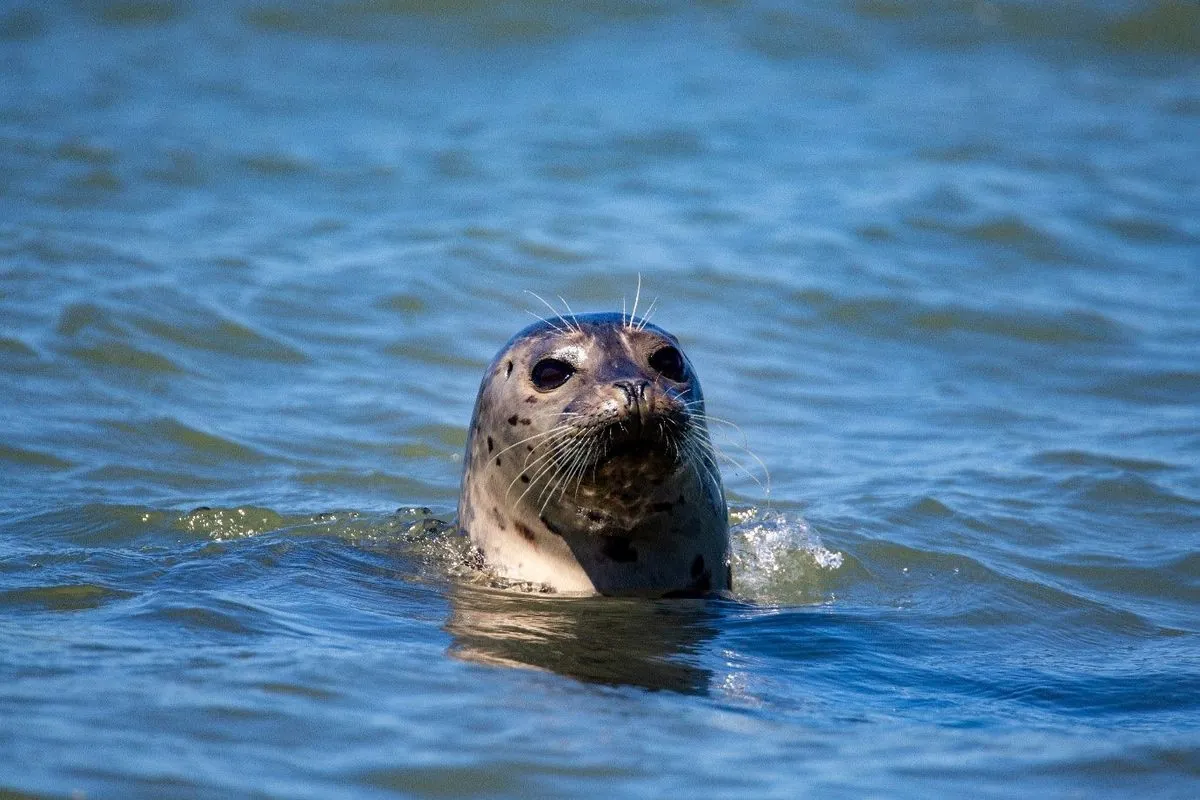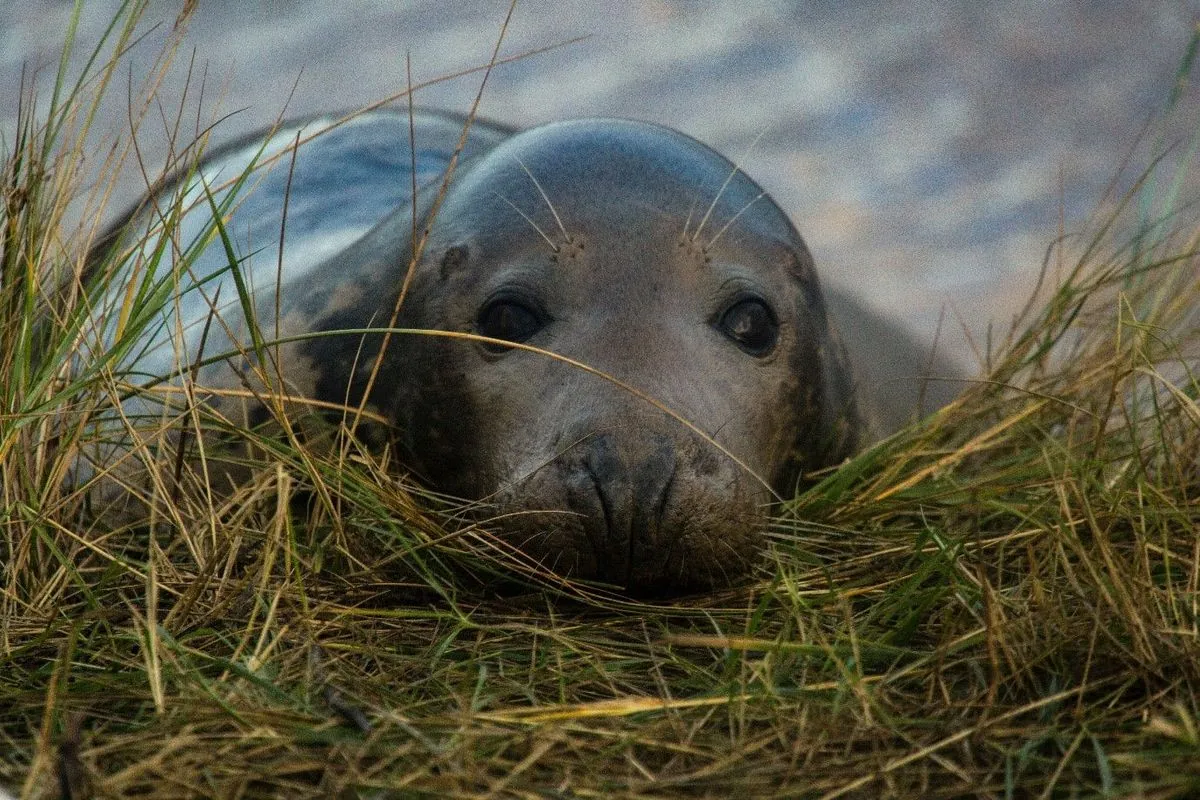Thames Estuary Seal Count Reveals Thriving Population Amid Challenges
Nearly 3,600 seals counted in Thames Estuary, indicating a healthy habitat. Conservationists highlight ongoing pollution threats and a decline in harbour seals, emphasizing the need for continued monitoring.

A recent survey conducted in the Thames Estuary has revealed a thriving seal population, with conservationists counting nearly 3,600 seals. This significant number suggests a healthy habitat for these marine mammals, despite ongoing environmental challenges.
The Zoological Society of London (ZSL), a world-renowned conservation charity founded in 1826, collaborated with military helicopter pilots from RAF Shawbury to carry out the annual grey and harbour seal survey across the Greater Thames Estuary. The count, which took place during the first two weeks of August 2024, coincided with the moulting season for harbour seals, when they spend considerable time basking on sandbanks.
Hannah McCormick, the ZSL conservationist leading the survey, emphasized the importance of these findings: "A flourishing ecosystem has enough food, shelter and space for all of its inhabitants. As top predators, this seal population shows us that there is good habitat available to the species that call the Thames home."
The survey results indicate a total of 599 harbour seals and 2,988 grey seals residing in the Thames Estuary. Grey seals, which are larger than harbour seals and distinguishable by their longer snouts, make up the majority of the population. It's worth noting that the UK is home to approximately 40% of the world's grey seal population, highlighting the global significance of these local conservation efforts.
While the current numbers are encouraging, they also reveal some concerning trends. Compared to the 2021 count, which estimated 692 harbour seals and 3,134 grey seals, there has been a slight decline. More notably, experts have observed a decrease in harbour seal numbers since 2018, a pattern also seen in other seal colonies along England's eastern coast.
McCormick stressed the need for continued research: "While the causes of these declines remain unknown, experts are investigating potential factors. By keeping a close eye on these changes, we will continue to build our knowledge of seals in the Thames while contributing to long-term regional and national data on seals."
The Thames Estuary, once declared biologically dead in 1957, has undergone significant cleanup efforts over the past decades. Today, it is home to over 120 species of fish, providing a rich food source for seals. These marine mammals, capable of diving to depths over 1,500 feet and staying underwater for up to 30 minutes, use their sensitive whiskers to detect prey in murky waters.

Despite the positive indicators, conservationists warn that pollution remains a significant threat to wildlife in the area. McCormick highlighted the dangers of plastic and sewage pollution: "Pollution entering our rivers, estuaries, and oceans will have a huge knock-on effect for everything living there."
She urged the public to take action by not littering and pressuring decision-makers to address pollution and discharge issues. "Everything that lives here is an argument for reducing that as much as we possibly can," McCormick stated, emphasizing that the health and recovery of waterways should be a key government priority.
The seal population's recovery over the past two decades is particularly noteworthy, considering the devastating impact of the distemper virus in the early 2000s. This highly contagious disease had decimated seal numbers, making the current population levels even more remarkable.
As apex predators and indicators of water quality and ecosystem health, seals play a crucial role in monitoring the overall state of the Thames Estuary. Protected under the Conservation of Seals Act 1970 in the UK, these marine mammals face various challenges, including the effects of climate change on their food sources and habitats.
The annual seal survey, combining boat observations and aerial counts from RAF Shawbury's No 1 Flying Training School, covers the coastline between Suffolk and Kent. This comprehensive approach ensures accurate monitoring of seal populations in this vital commercial waterway for London.
As the Thames Estuary continues to recover from its industrial past, the presence of a thriving seal population serves as a testament to the resilience of nature and the importance of ongoing conservation efforts. However, the observed decline in harbour seals and persistent pollution threats underscore the need for continued vigilance and action to protect these charismatic marine mammals and their habitat.


































